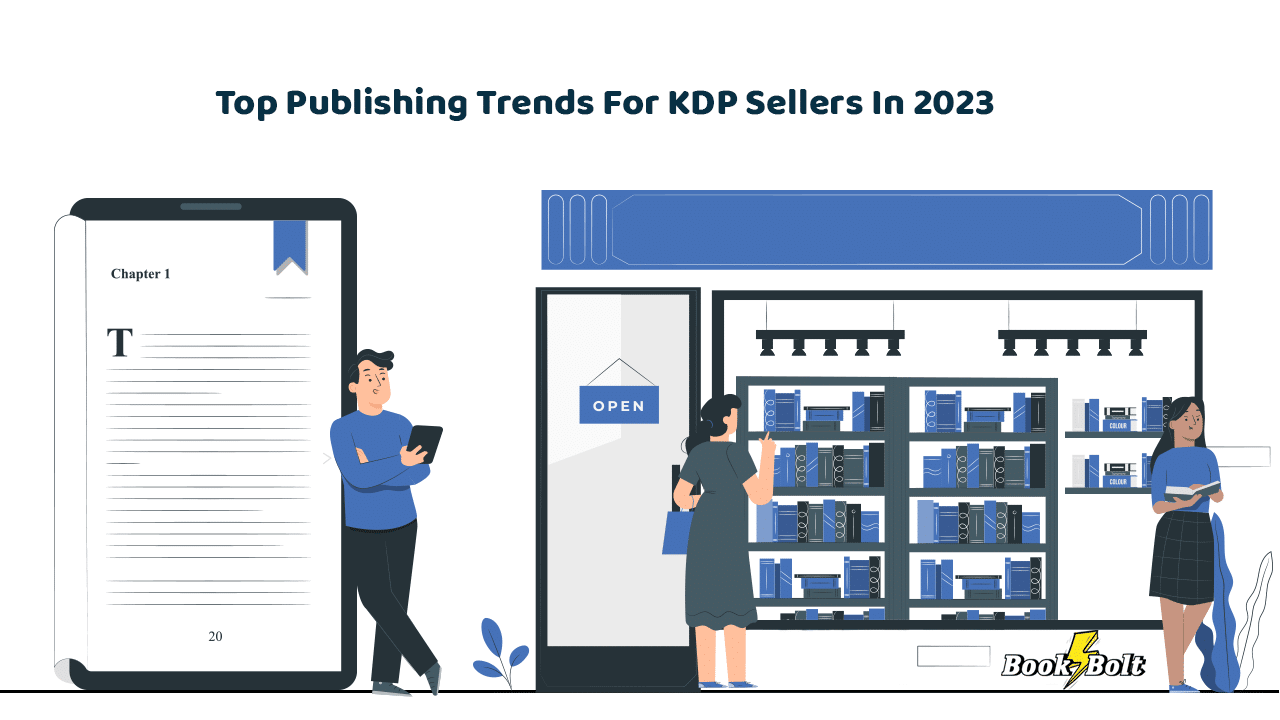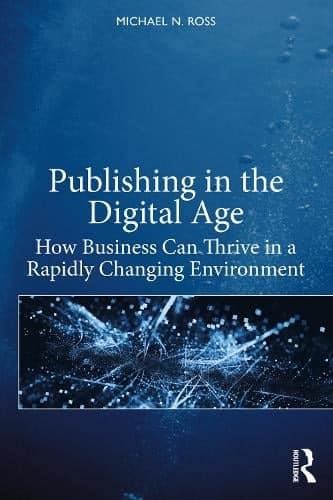
As much as things change in the publishing world, some concepts stay the same. The rise of e-books, audiobooks, and digital technologies are clear examples of the new, but the classic publishing giants are also still working much the same way as they ever did along with these new additions. In future years, when publishers and consumers modify their expectations, it will be interesting to see which trends will be the most significant. Despite the fact that the overall income level of the industry has been unchanged over the past several years (around $26 billion in the United States alone), the industry does seem to be showing signs of some changes that will affect how all of us work within it.
CONSOLIDATION
To begin with, the merging of many of the top players is something to keep an eye on, as with less market competition comes more demands from those on top and more stagnation in the market overall. In the early 2000s, the “big six” publishers controlled the publishing sector; the only major players were Hachette, Macmillan, Penguin, HarperCollins, Random House, and Simon & Schuster. In 2012, these six authors sold fifty percent of all books sold in the United States. With the merger of Random House and Penguin, the field shortened. It is shown that these five publishers sold 80% of all books in 2021.
In that same year, Penguin Random House (PRH) announced plans to purchase Simon & Schuster for almost $2B. That would have meant that there would be only four significant players in the sector, further consolidating publishing power in the hands of a small number of corporations. To make this point clearer, if these two publishing houses had merged, that one combined publisher would control 34% of annual book sales.
The Writers Guild of America and the Authors Guild were vehemently opposed to the merger. They believed that this imbalance in the publishing sector would diminish competition for manuscripts, reduce financial advances, and make it more challenging for authors to negotiate contracts. This planned acquisition finally came to an end in 2022 after two years of regulatory investigation, a contentious legal dispute, and hundreds of millions of dollars in costs.
…AND THE RESULTING RISE OF DIVERSE, INDEPENDENT PUBLISHERS
Because of situations like this, many in the publishing industry perceive the top publishing firms as becoming behemoths that attempt to control the entire book market, and the fear of this resulted in an increased number of independent publishers. These lesser publishing businesses stand in stark contrast to the largest publishing houses. These companies frequently take chances on uncommon genres and unknown authors.
But aside from the takeovers and mergers, there is also a push for more diversity in the industry as a whole. In a relatively recent study, it was shown that almost 42% of the 3,700 books evaluated in it contained at least one Caucasian main character. In contrast, 36% of works had a central character of a different race (while 29% of primary characters were animals or other types). In addition, recent surveys have revealed a lack of diversity among publishing business employees themselves. In one study, it showed that 76% are white and 74% are female. The takeaway from this is that there is virtually no diversity in publishing. These statistics have prompted many in the industry to urge for greater diversity among authors, characters, and publishing executives. Perhaps for no other reason than to show it was being done before the online communities started making demands.
( https://d1qwyayg24w5f4.cloudfront.net/images/home/[email protected] )
And that might not be too far off. People across social media are bringing attention to the issue by using the hashtag #weneeddiversebooks. On Instagram, more than 250,000 posts contain the hashtag. On Twitter, authors shared the amount of their book advances using the hashtag. It became evident that white authors received more lucrative contracts than black authors. As the hashtag became popular, The New York Times analyzed over 7,000 novels and found that 95% of the books were written by white authors.
One way that publishing firms have responded to criticism is by recruiting editors whose primary responsibility is to acquire works by Latinx and BIPOC authors (black, indigenous, and people of color). The trend of BIPOC (black, indigenous, and people of color) books emerged in 2020, and demand remains high today. But even though some publishers have also developed inclusion strategies and contributed to anti-racism groups, it is unclear if this will all usher in a new era of publishing.
SMALL BOOKSTORES CONTINUE TO STRUGGLE
In 2023, we will continue to see the crisis of the tiny bookseller, and the general outlook for small bookstores is grim. Although independent bookshops have lately rebounded some, the aftermath of the COVID pandemic may still be an obstacle that many of them are unable to overcome. Similar to many other sectors, mom-and-pop bookstores cannot generate as much revenue as they did prior to the implementation of lockdowns. When compared to profitability before the lockdowns, bookshop revenues (in all levels of bookshops) have seen a decline of over $2 billion.
Small bookstores, like many other small businesses, rely on holiday sales to finish the year being profitable. During the final months of the year, some bookstores generate up to one-third of their total yearly revenue, while other independent booksellers report that the holiday season was a bright spot in an otherwise turbulent year. Due to limitations on in-store capacity, online sales have become a lifeline for many of these booksellers. Yet eCommerce is difficult for bookshop proprietors who have never sold online and lack the logistical capacity to make it happen. This could be the turning point where those who bend and adapt might survive, but those who cannot (or will not) will break.
LIBRARIES VS. PUBLISHERS
It also seems that libraries and publishers are once again at odds. As demand for digital media increases, libraries and publishers are engaged in a competition, as libraries promote the free exchange of information. Nonetheless, many publishing corporations fear that library checkouts would reduce their revenue. This conflict has been in the making for years and has only been exacerbated by the pandemic. In past years, book publishers imposed restrictions on how libraries might provide users with access to their e-books. Frequently, they would grant libraries a specific lifetime for an e-book, such as two years or fifty-two checkouts per e-book license. Yet libraries have been paying an average of $45 per e-book, about three and a half times the retail price.
Back in 2019, one of the “big five” publishing houses, implemented a new policy limiting libraries to one copy of an e-book for the first two months after its release. They argued that since they have figures showing that 45% of its e-books are read in libraries, they need to seek out ways to leverage this policy to increase sales. Luckily, this policy did not survive long. When COVID struck, libraries complained and the publisher altered course and they were compelled to rescind the policy that restricted library access to their electronic publications.
AI: WE MEAN YOU NO HARM
You have probably heard all the worry in the media over AI. Well, this scare is not only helping to sell advertising, it’s affecting the publishing industry as well. Numerous web publishers currently employ AI to produce articles. Yet, artificial intelligence still struggles to generate engaging fiction. To date, it has been easy for many to determine that a work of fiction was authored by a non-human. Nonetheless, given that these AI programs have made tremendous strides in recent years, it may not be long before AI produces fiction that is significantly less robotic.
But apart from actual content creations from scratch, AI has further applications for book publishers. They employ this technology for content categorization, acquisitions, plagiarism checks, and book promotion. In the publishing industry, the potential gains associated with digital marketing and promotion are practically unlimited.
CHANGES = OPPORTUNITIES!
There is also how new readers are being lured online into trying new works and authors to consider. Opening chapters are being read live on social media feeds, virtual literary events are attracting enormous numbers of attendees, and publishers are watching consumer behavior and data like never before. There are over 15 million posts containing the hashtag “Bookstagrammer” on Instagram, and people who are being called “booktubers” have developed a community on YouTube.
In terms of self-publishing, in 2010 there were around 153,000 ISBNs assigned to self-published publications. In only eight years, this quantity had increased to about 1.6M books. Self-publishing attracts authors, especially beginning authors, because they have complete control over their book. The author chooses the cover design, manages the editing, and sets the pricing, as opposed to a publishing house. In recent years, authors who have previously published successfully with a traditional publisher have also moved to self-publishing.
As you see, the publishing sector has always had to adjust to changing circumstances. And while it is true that the previous few years have witnessed the most rapid developments to date, we have these changing times to thank for a huge amount of new work and a variety of fresh prospects and media forms like podcasts and audiobooks. Regardless, it will be intriguing to observe the development of these publishing sector trends over the coming years.






Patricia Farrell
What about the independent audiobook market? Where is it thriving, what platforms are on it and what does it bode for the future? KDP won’t take audiobooks unless you use their live-reader service.